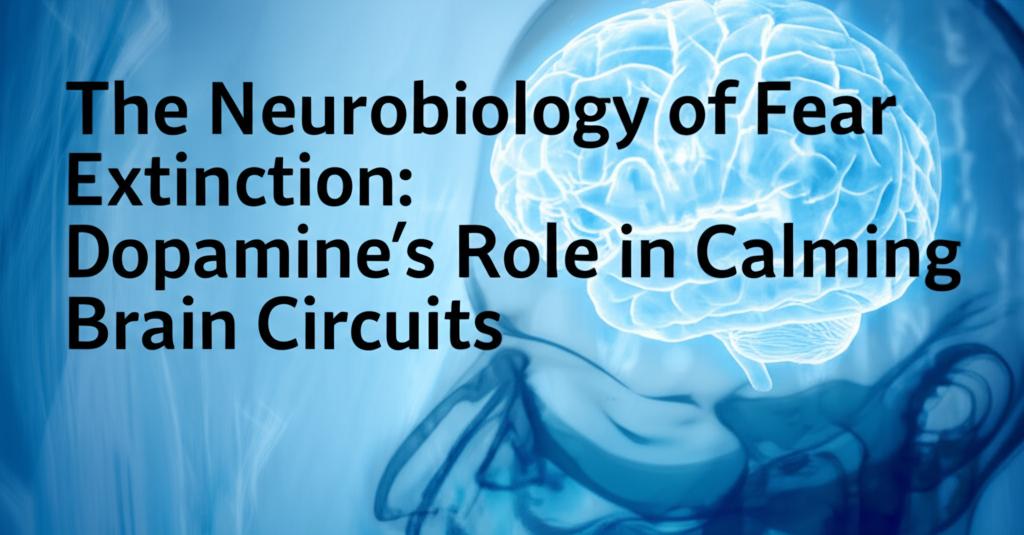Dopamine, a neurotransmitter known for its role in reward and motivation, is emerging as a critical player in the brain's ability to extinguish fear, offering new insights into how we might treat anxiety and trauma-related disorders. When a perceived danger subsides, the brain initiates an "all-clear" signal, a process neuroscientists are discovering is heavily reliant on dopamine released within specific brain circuits. This mechanism is essential for restoring a sense of calm; when it malfunctions, it can contribute to prolonged anxiety or conditions like post-traumatic stress disorder (PTSD).
Recent research, particularly from MIT, has illuminated how dopamine facilitates fear extinction. Studies in mice have shown that the process of learning to be afraid and then learning that the threat is no longer present involves a dynamic interplay between different cell populations within the amygdala, the brain's fear center. Fear memories are initially encoded by neurons in the anterior part of the basolateral amygdala (aBLA). However, when the danger is no longer present, a new memory, known as an extinction memory, is formed by neurons in the posterior part of the basolateral amygdala (pBLA). This extinction memory then suppresses the original fear. Notably, these pBLA neurons are also involved in processing feelings of reward, which helps explain the sense of relief experienced when an anticipated danger doesn't materialize.
The key question researchers have been exploring is what triggers the pBLA neurons to encode these fear extinction memories. The answer appears to be dopamine, originating from distinct groups of neurons in the ventral tegmental area (VTA), a crucial part of the brain's reward system. Dopamine is sent from the VTA to these different amygdala populations, effectively acting as a teaching signal.
Here's a breakdown of dopamine's role in calming brain circuits during fear extinction:
- "All-Clear" Signal: Dopamine release acts as an "all-clear" signal, indicating that a previously dangerous situation is now safe. This is essential for initiating the process of fear extinction.
- Activation of Reward-Responding Neurons: Dopamine activates specific neurons in the posterior amygdala (pBLA) that are tied to reward processing. This activation drives the formation of the extinction memory. This suggests that unlearning fear isn't just about suppressing the fear memory; it’s an active, positive learning process powered by the brain's reward machinery.
- Differential Action on Amygdala Subpopulations: Dopamine doesn't act uniformly across the amygdala. Distinct populations of dopaminergic neurons in the VTA project to the fear-encoding neurons in the aBLA and the extinction-promoting, reward-responding neurons in the pBLA. These amygdala neuron populations also express dopamine receptors (primarily D1 receptors) to different degrees, with pBLA neurons having more, making them more sensitive to dopamine's fear-extinguishing effects.
- Prediction Error Signaling: Dopamine neurons in the VTA are activated by the unexpected omission of an aversive stimulus (e.g., not receiving an expected foot shock). This "prediction error" signal – the outcome being better than expected – is thought to be crucial for initiating and driving fear extinction learning. This signal is particularly strong at the beginning of extinction when the absence of the threat is most surprising.
- Modulation of Neural Circuits:
Amygdala: Dopamine signaling within the amygdala, particularly in the BLA, is critical for the acquisition of extinction memories. It helps to integrate information and shift the balance from fear expression to fear suppression.
Medial Prefrontal Cortex (mPFC): The mPFC, especially the infralimbic (IL) subregion, is vital for consolidating fear extinction memories. Dopamine levels increase in the mPFC during and after fear extinction, and D1 receptors in this region are required for this consolidation. Dopamine here helps to enhance relevant signals and modulate synaptic plasticity.
* Nucleus Accumbens (NAc): Though traditionally seen as a reward center, the NAc is also involved in regulating aversive memories. Dopaminergic signals in the NAc, particularly related to reward prediction error, are necessary for fear extinction.
- Causal Role Confirmed by Manipulation: Studies using techniques like optogenetics (using light to control neuron activity) have confirmed dopamine's causal role. For instance, inhibiting dopamine release from the VTA to the pBLA impairs fear extinction in mice. Conversely, activating these dopamine inputs accelerates extinction. Manipulating dopamine receptors on amygdala neurons also directly impacts fear recall and extinction. Overexpressing dopamine receptors in pBLA neurons promotes extinction, while reducing them impairs it.
Understanding this dopamine-driven fear extinction mechanism has significant clinical implications. Deficits in fear extinction are a hallmark of anxiety disorders like PTSD, phobias, and generalized anxiety disorder. Current treatments like exposure therapy are essentially forms of extinction learning.
The new findings suggest that:
- Targeting dopaminergic pathways could be a novel therapeutic strategy.
- Enhancing dopamine signaling, perhaps in the pBLA or mPFC, might augment the brain's natural ability to extinguish maladaptive fear memories.
- This research opens avenues for developing more effective treatments that don't just suppress fear but actively teach the brain that it's safe, leveraging the brain's own reward and safety learning systems.
While this specific VTA-amygdala dopamine circuit is a key node, fear extinction is understood to be a complex, brain-wide phenomenon. However, the detailed understanding of dopamine's role within this circuit provides a crucial piece of the puzzle and a promising target for future therapies aimed at alleviating the burden of fear-related disorders.

